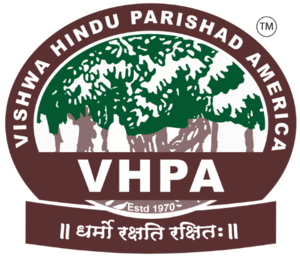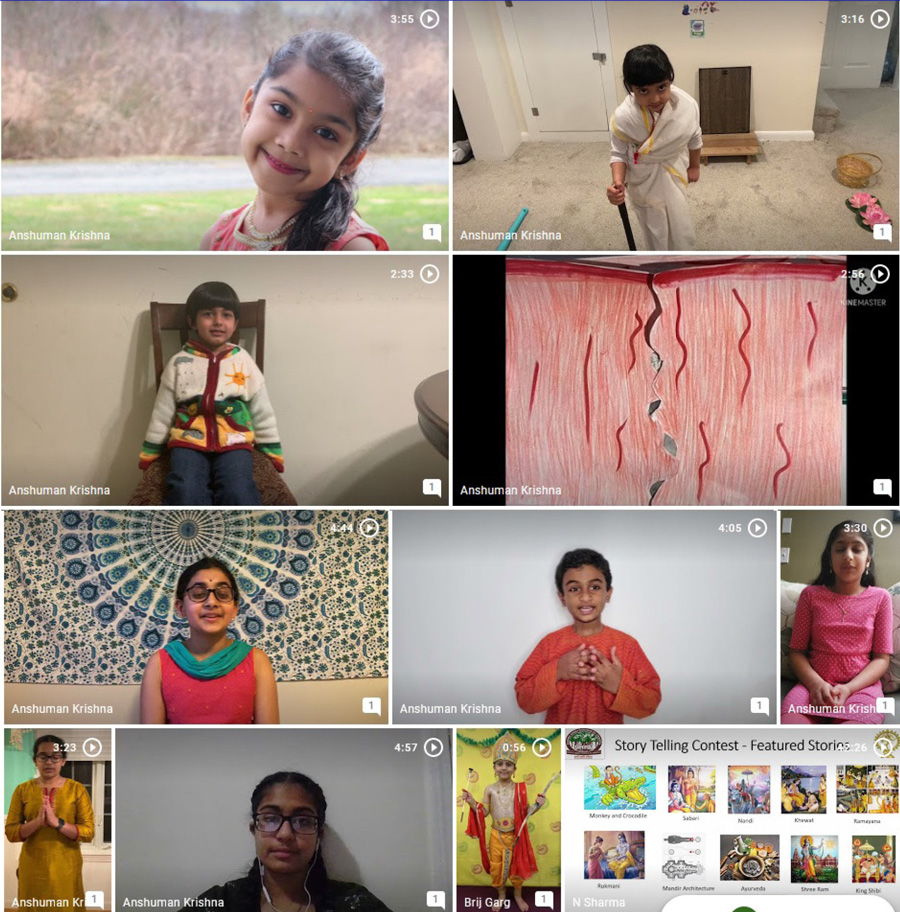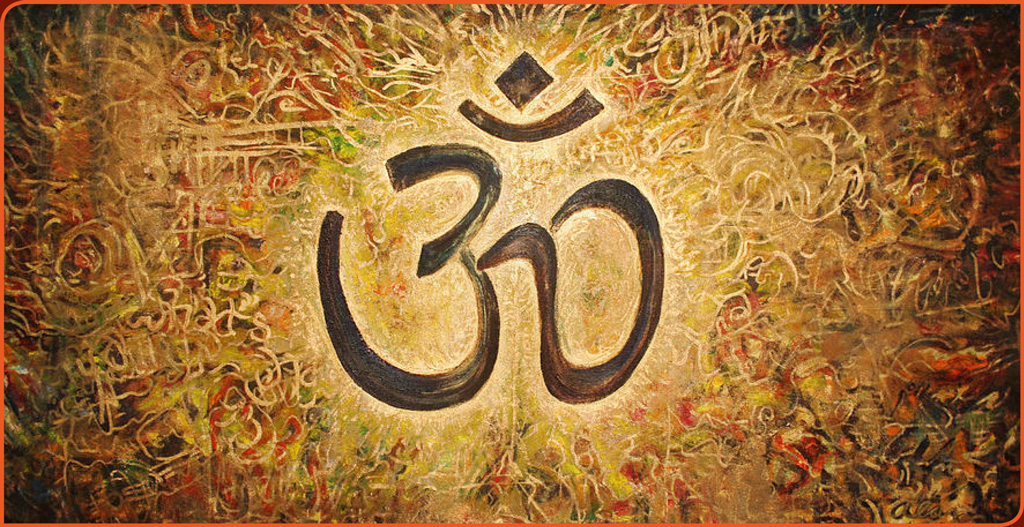Cosmic Dance of the “Sanatana” versus “Modernity”
As Hindus living in the United States of America, we have the unique privilege of living simultaneously in two different paradigms, consciously or not. The American or Western paradigm more generally can be called ‘progressivism’, where every generation is continually standing on the shoulders of the previous one, where science and technology are marching relentlessly towards the future, leaving the past behind. Modernity is a moving target, and the relentless flow of time, rendering everything that is new and exciting today, into the inexorable obsolescence of yesterday. When viewed from the lens of modernity, Hindu thought belongs to the world of the ancients, old, archaic, and clearly superseded long ago. There is an unyielding force that time exerts upon our consciousness. If we stand still even for a moment, we will be run over by the current of time. This inexorable movement of time may suggest that Hindu thought has once and for all been decisively superseded.
On the other hand, Hindu thought, in its own conception, is beyond time, situated in the realm of the timeless, i.e., Sanatana. The Veda may speak in a language that we do not fully comprehend today, but its message is not bound by time. Its timelessness bursts forth and re-emerges again and again, in era after era, yuga after yuga, as the Veda might itself say. The central revelation of the Veda is that as a human being, we have one foot in time, and another in the timeless, one part of our lives submerged in the frenetic activity of our everyday lives, while there is another part of our self, that abides in the timeless, witnessing, watching, observing the drama of existence, untouched by all this ephemeral and transient play.
Modernity defines itself in opposition to the old, consigning the ancient to the museum and by denying the traditional. The argument of progressivism is within time and stands on the ground of its repudiation of that which it dismisses as old and obsolete. The timeless on the other hand, does not stand in opposition to that which is timebound and finds new expression time after time. Just when we think that it has been submerged once and for all, it emerges once more, in a new form, in a new language, and with renewed relevance. In the Bhagavad Gita, Krishna tells Arjuna, ‘This Yoga was lost due to the eons of passage of time – so I am restoring it by instructing you in it (B.G. IV.2).’ That was already a few thousand years ago. Adi Shankara says in his introduction to his commentary on the Gita, that he is restating its import, because time has clouded its message, and he sees his task of being primarily one of clarification of an ancient teaching for a new age. It seems that the timeless and the timebound are caught up in some kind of cosmic hide and seek game, where for a time, the timeless seems to be lost, obscured by the modernity of its age, once and for all, never to return. And then, the timeless returns, once again to our wonderment.
Contemporary Re-Emergence of the “Timeless”
We are witnessing one such epoch right now. A fascinating reemergence of the Hindu thought is taking place in front of our own eyes, in an alien land and culture – the contemporary West in general, and America in particular. Without any central organizing agency, without any grand overarching vision or plan, without any initiating authority or power, without any semblance of violence or force, Hindu thought has emerged, slowly but inexorably, and seeped into the consciousness of the Western society. Like a spark, it has rekindled all over again, the fire of knowledge and transformation reignited once more, unbeknownst to us Hindus ourselves, unaided by our will or desire. Where this will go, and how it will live and what may yet come of it, remains unknown.
What makes us so sure? “We are all Hindus Now” was the title of an article that appeared in August 2009 issue of Newsweek magazine. Following excerpts from this article should give us a good read on the spiritual heartbeat of today’s America:
“America is not a Christian nation. We are, it is true, a nation founded by Christians, and according to a 2008 survey, 76 percent of us continue to identify as Christian…But recent poll data show that conceptually, at least, we are slowly becoming more like Hindus and less like traditional Christians in the ways we think about God, our selves, each other, and eternity. “The Rig Veda, the most ancient Hindu scripture, says this: ‘Truth is One, but the sages speak of it by many names.’ A Hindu believes there are many paths to God…all are equal. The most traditional, conservative Christians have not been taught to think like this. They learn in Sunday school that their religion is true, and others are false… Americans are no longer buying it. According to a 2008 Pew Forum survey, 65 percent of us believe that ‘many religions can lead to eternal life’—including 37 percent of white evangelicals, the group most likely to believe that salvation is theirs alone…
“Then there’s the question of what happens when you die. Christians traditionally believe that bodies and souls are sacred, that together they comprise the ‘self,’ and that at the end of time they will be reunited in the Resurrection… Hindus believe no such thing. At death, the body burns on a pyre, while the spirit—where identity resides—escapes… So here is another way in which Americans are becoming more Hindu: 24 percent of Americans say they believe in reincarnation, according to a 2008 Harris poll. So agnostic are we about the ultimate fates of our bodies that we’re burning them—like Hindus—after death. More than a third of Americans now choose cremation, according to the Cremation Association of North America, up from 6 percent in 1975”.
On a more visible plain, the advent of thousands of Yoga studios, meditation centers, ayurvedic health centers, vegetarian/vegan restaurants and the rising popularity of sans meat products, all attest to a massive social movement that has its roots firmly planted in Hindu thought. There is no denying the fact that a gradual transformation of the American value system is taking place in front of our own eyes. What emerges at the other end may not look anything like traditional Hinduism, but Hindu threads will undoubtedly be shining bright in its cultural tapestry.
How did it happen?
This transformative change in American attitudes did not happen overnight. It is the result of an organic movement that spans a period of almost 250 years. It was a movement without any master plan or directive force and can be divided into three partially overlapping phases. The first phase saw an influx of the Hindu thought into the West, transmitted by early translations of Sanskrit texts, e.g., The Bhagavad Gita in 1784 CE, and attempts by Europeans to decipher those texts on their own, with a minimal degree of help from traditional Hindu scholars or Gurus. The second phase involved visiting Hindu Gurus, Swamis, and Yogis from India, who presented Hindu thought as an integrated system of spiritual self-discovery, that caught the imagination of many in the West. The third phase, which is ongoing, encapsulates the immigration of Hindus in large numbers to the West, and the gradual Westernization and Americanization of Hindu thought, and its slow but sure diffusion into the Western consciousness.
“Hinduism and America” – The Book
“Hinduism and America: How Hindu Dharma is Transforming the West” is a recently released coffee table book that attempts to narrate the story of this transformative movement. Written jointly by Dr. Jai Bansal, VP of Education of Vishwa Hindu Parishad of America (VHPA), and Kalyan Viswanathan, President of Hindu University of America (HUA), this book is the result of two-and-half-year long collaboration project of VHPA and HUA. The book documents the story of the legions of Swamis and Gurus who brought Hindu thought to the West. It also gives voice to ordinary Hindus who migrated to the West in search of better lives for themselves. As they slowly integrated themselves into the professional and social fabric of their adopted land, they imparted their own special textures and colors to it, thereby transforming it in ways that could not have been imagined even 50 years ago!



![[ India Today ] Ohio senator JD Vance thanks wife, a Hindu, for helping him find Christian faith](https://hinduvishwa.org/wp-content/uploads/2024/06/us-senator-jd-vance-reveals-how-his-hindu-wife-usha-helped-him-find-his-christian-faith-image-re-272530504-16x9_0-120x86.webp)









